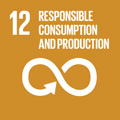- Docente: Andrea Versari
- Credits: 9
- SSD: AGR/15
- Language: Italian
- Teaching Mode: Traditional lectures
- Campus: Cesena
- Corso: First cycle degree programme (L) in Viticulture and Enology (cod. 8527)
Learning outcomes
The student learns the chemical components of grapes, musts and wines and approach the reactions that occur in wine during vinification, stabilization, bottling and storage in order to work independently and with a capacity for critical analysis and solved problem approach.
Course contents
Prerequisites: knowledge of basic chemistry and wine analysis is required.
Wine chemistry
The course describes the main components of grapes, musts and wines (carbohydrates, acids, nitrogenous substances, enzymes, polyphenols, minerals, aromatic compounds, sulfur dioxide), their chemical characteristics, the main reactions and technological importance, with case study.
Wine packaging
Also, will investigate the following topics:
1. Permeation and Migration;
2. Wine tank materials: steel, cement, fiber glass, plastic;
3. Barriques, chips, tannins;
4. Wine packaging: glass, brick, PET, kegs;
5. Shelf-life of wine;
6. Wine closure (cork, elastomers, aluminium);
7. Bottling line;
8. Oxygen and wine;
9. Labelling
Readings/Bibliography
The ability of the student to interact and to take notes during the lecture is fundamental. Besides the syllabus available from the professor, the following textbooks are suggested:
Ribèreau-Gayon P. et al. Handbook of Enology vol. II
(Edagricole, Bologna).
Margalit Y. Concepts in Wine Chemisty (Eno-One Editrice
UIV).
Usseglio-Tomasset L. Chimica Enologica (AEB, Brescia).
Piergiovanni L., Limbo S. Food
Packaging (Springer).
Teaching methods
The course consists of 9 CFU of which 6 CFU of the principles of
wine chemistry and 3 CFU of packaging and storage of wines. As
part of the total 9 CFU about 6 CFU are of lectures and about
3 CFU of laboratory practice that are conducted at the campus
of Food Science (Cesena). The aim of the practical exercises
is:
- Make the student familiar with the protocol of the
oenological laboratory instrumentation, including safety and
regulation;
- Develop a critical sense of the student in the selection of
parameters and methods for analysis of musts and wines;
- To stimulate the student's ability to recognize the main
characteristics of composition of musts and wines.
Assessment methods
The assessment of learning is through a final written
exam of 3 hours, and an oral test.
The written test is
designed to ascertain the candidate's
knowledge and his
ability to solve problems in the context of the issues
addressed. It is assessed by a judgment which should be
positive to allow access to the oral test. The validity of the written
test exceeded is
limited to the appeals of the same examination
session.
The oral exam aims to
test knowledge acquisition under the program of the
course.
The final vote, out of thirty, takes into
account a weighted estimates
reported in both
trials.
Teaching tools
Teaching in classroom is supported by the use of computers and
projector (ppt slides), whereas the practical exercitations will be
held in laboratory.
Besides the mandatory textbooks available at the
library, the student will be provived with the
syllabus of the course (pdf in italian) and articles on
both technical and scientific Journals. Guided visit to
production plant and seminars with expert in the field will be
considered.
Office hours
See the website of Andrea Versari
SDGs

This teaching activity contributes to the achievement of the Sustainable Development Goals of the UN 2030 Agenda.
